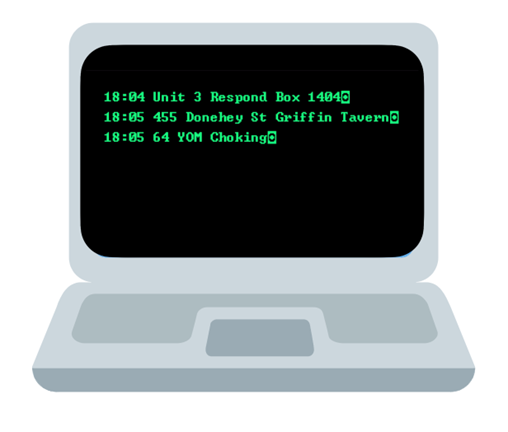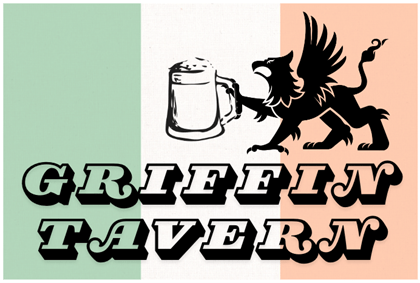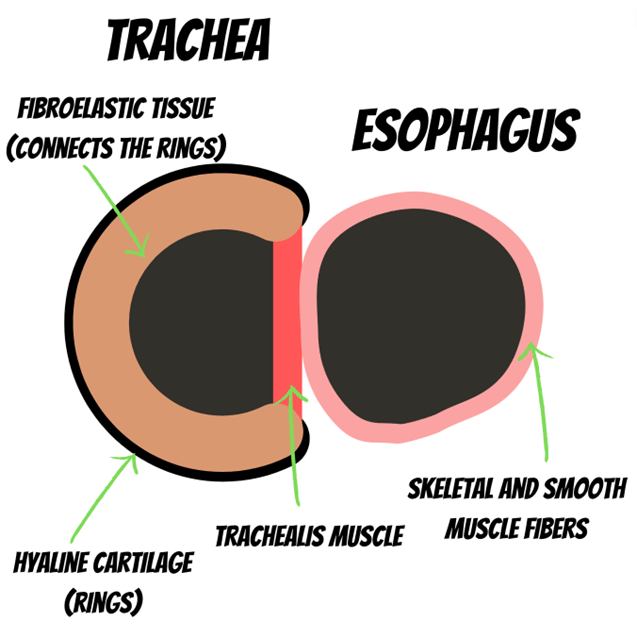
Images provided by the author.
You can’t beat the summertime shifts with your partner, especially those when the humidity has conveniently decided to take the day off. You stretch your hands out and warm up for the inevitable rock, paper, scissors on who picks where you eat for dinner tonight. You know if you hold true to your streak of winning, paper will always beat your partner’s steadfast and stubborn rock. You have been craving fish and chips, and there is no better place than Jim Derdeyn’s Fish House. As you wind up for the count and throw down, your CAD chirps.


You let your partner know we are being called to the Griffin Tavern for a 64-year-old man choking. Your partner looks over at you with a grin, puts the rig into drive, and says cheerfully, “The Griffin Tavern, where everyone’s a little bit Irish!” You smile back and mark en route. The trip is only about two miles away and traffic is light. You pull and mark on scene and are quickly met by Debbie, the owner and neighborhood director of festivities. She seems very calm, but you can tell she is urgently moving. She tells you Terry is choking on steak, and they can’t get it up.
She lets you know two members of the local rescue squad have been trying the Heimlich on Terry, but nothing has come up. You grab your jump bag and remind your partner, who is in the back grabbing the monitor, to snag the suction. You go up the stairs and into the tavern to find two people doing the Heimlich on an upright Terry. Terry is making a weird sound and gesture of gagging and coughing all in one. He also says with a clear tone that he can’t breathe. You are caught off guard momentarily when you simultaneously see all this happening. You walk over and start your assessment. You notice a plate with half a steak, broccoli (not half gone, because who likes broccoli), and the fork and knife next to it.
Terry’s wife stops you in your walk over and says Terry was trying to quickly eat his steak so they can get to the theater for the 1900 curtain call. Travis, their friend, was telling a joke, and Terry started choking and gagging, then dry heaved. You look at Terry and ask him if he feels better. He nods his head and says no. He says he has chest pain, too, and gestures to his mid sternum at about the second costal space. As your partner hooks Terry up to the monitor, you grab your stethoscope and start top-down auscultation. You listen to the side of Terry’s neck and hear clear airflow; you ask him to talk, and his speech is clear; then you ask him to swallow, and he does it with ease; you move down and listen to his lungs, and they’re clear as well. While you are listening, he comments, “I’m still choking.” You glance over at the monitor and find the below.

What are your thoughts? Why is Terry “choking” but able to still clearly talk, move air in and out of his lungs, and swallow with no issue?
Terry is suffering from Steakhouse Syndrome. He has a large bolus of food that has become stalled or lodged in his esophagus and isn’t moving down (through the peristaltic motion) to his stomach. It is also so large that it is pushing anteriorly into the trachea.
**Refresher**: The trachea is made of fibroelastic tissue (flexible but sturdy) that connects the cartilaginous rings (providing support like a corrugated pipe). The posterior points are connected by muscle. This muscle allows for flexibility and houses stretch receptors (which help trigger the choking reflex when aspirating something). The esophagus is made primarily of skeletal and smooth muscle fibers. The esophagus is flexible and walks food down to the stomach through a wavelike motion called peristalsis.

Back to Steakhouse Syndrome, which doesn’t only happen with steak. It is any food bolus that becomes lodged. It is commonly seen when the person eats too fast and doesn’t chew it well enough. We can all easily say our mother knew about Steakhouse Syndrome well before it was a thing when she told you to slow down and chew your food!
The food bolus becomes lodged and pushes into the trachea, stretching the Trachealis muscle and triggering the choking reflex. You will see patients become ramped up, start to vomit or dry heave, cough, state, “I’m choking,” develop heartburn or chest pain from the pressure, and some have triggered an asthma attack. You’ve probably felt similar symptoms when you had a big bubble from a carbonated beverage lodge, which provoked that pressure and pain.

What’s the fix? For EMS, our goal is to ensure the patient maintains a good airway, breathing, and circulation and also always do a full assessment to ensure this isn’t something else. STEMI, TAA, and others can have similar presentations and symptoms. Once the patient arrives at the ED, they verify a lodged food bolus is the issue and usually start with smooth muscle relaxants to see if they can get the esophagus to relax and the bolus to move with liquids administered to help push it down. If that isn’t successful, they can scope it and try to pluck out the bolus.
You load Terry onto the cot and get him loaded up and en route to the ED. On arrival at the ED, Terry is monitored and given carbonated beverages to help drive the passing of the bolus. He is also given a smooth muscle relaxant, and the bolus passes one hour later.
To bring it all back, Steakhouse Syndrome is a unique condition that sounds like choking on dispatch and feels like choking to the patient but isn’t an occlusive airway problem like choking. Using your assessment skills and capnography to verify what you find and ensure the airway is clear is key.
Chris Kroboth has been a career paramedic/firefighter for over 17 years and in EMS for over 23. He has been in prehospital and in-hospital education for the past 18 years. His last assignment before returning to operations was as the EMS training captain in charge of continuing education programs and certification. He is also affiliate faculty with the Virginia Commonwealth University Paramedic Program. He is the U.S. clinical education manager for iSimulate and also facilitates national conference clinical challenges to include EMS World, ENA and NTI.



Swallows easily? Ever use glucagon in the field?
For a Choking Patient (absent of a BG Test)?